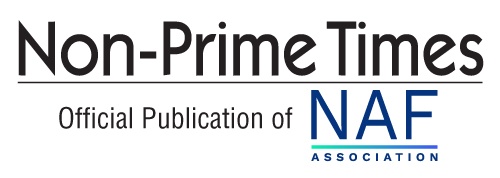Car makers, lenders and auto retailers for the most part have weathered what is expected to be the worst of the post-pandemic supply-chain challenges that altered production in 2020 and 2021. And while today they’re facing new economic-related challenges, sales activity is holding steady, if not outpacing initial forecasts for 2023. This presents us with an opportunity to check in and see how many of today’s lenders, dealers and OEM partners are progressing with their own digital transformation strategies.
New-vehicle sales activity holding firm
Many of the large car makers have reported that new-vehicle sales increased substantially in the first three months of the year, and this can be attributed to improved supplies of key components and firm demand from both consumers and fleet customers.
Thankfully, the higher interest rates have not stopped the train from cruising down the tracks. To bring annual inflation back down to its normal range of 2 percent, the Fed has increased the federal funds rate target range by 500-basis points dating back to March 2022. Even throughout this aggressive period of rate hikes, unemployment has dropped from 3.6 percent to 3.4 percent over the same period.
Despite these economic headwinds, new vehicle sales are projected to surpass 14.5 million units in 2023, according to S&P Global Mobility forecasts. This would be up from 13.75 million new vehicles in 2022 but still off from its recent high mark of 17.5 million in 2016.
Digital retailing must extend beyond the consumer experience
Throughout the last few years, lenders, dealers and OEMs have certainly focused on building out more digital retailing strategies for the consumer. Fueled by the pandemic, there are a lot more options today for a digital car-shopping experience. But this is only one side of the coin. In order to truly create this digital journey, dealers, lenders and OEMs must also have their own digital infrastructure for all the documentation, contracts and paperwork that must be signed, shared and stored during and after the transaction. Without this infrastructure, the industry is not necessarily “digital”.
And even those systems that are using a more digitized process continue to suffer from a fragmented system using disparate technologies and platforms that severely hamper the broader experience for everyone involved.
Over the last 18-24 months, the industry is making great strides, yet more work is needed. Nearly 4 in 5 respondents from a recent survey (80 percent) said they are not currently using digital finance solutions. Twenty-three percent said they still have not found the right solution to fit their needs, and 24 percent said they haven’t yet found the right qualified provider to implement these solutions¹.
Digital Adoption for Lenders Mirroring Vehicle Sales Trends
According to the most recent Auto Finance Digital Transformation Index, auto dealers, service providers and lenders showed a digital adoption growth rate of 12 percent in the first quarter compared with the fourth quarter of 2022. The growth rate of digital was essentially flat comparing year-over-year, which is in line with the lack of significant growth in vehicle sales activity over the last twelve months.
The annual spring tax-buying season may have contributed to the slight increase in digitized contracting during the first quarter. Clearly 2023 has remained a highly competitive environment where dealers and lenders remain focused on overcoming economic challenges to find sales and portfolio growth. It is not surprising that the growth of digitized back-office processes and documentation has slowed to also mirror vehicle sales activity, and it is also expected that dealers and lenders are keeping a watchful eye on the progress of sales growth as they plan additional investments in digital.
Digital Adoption Continues in Securitization Markets
Securitized digital auto loans increased 32 percent in the first quarter compared to the same time last year. What’s more, securitized digital auto loans increased 317.85 percent compared to the fourth quarter of 2022. This can be attributed to the strong growth in securitized markets to the rising appetite in digitized loan origination in the secondary markets through added efficiency in the pooling, auditing, collateralization, and the execution of security exchanges using digital assets. Additionally, the more than 300 percent growth rate can also be attributed to a seasonality trend based on historical data as many lenders seek capital in the first quarter compared to the fourth quarter.
Why We Must Transition From Paper
The use of paper is not only inefficient, but also carries significant compliance risk. Examples include photocopies of customers drivers’ licenses sitting on the copier or a salesperson’s desk; Deal jackets sitting on an F&I managers desk with the door open to the office; And paperwork taken to the driveways of unverified customers for wet inked signatures. This results in customers with envelopes and throwing them in the glove box. Packages of contracts are sent to lenders via mail. And of course the back room with years and years of deal jackets.
We still have a very paper-driven culture in automotive, wrought with risk and liability for everyone involved. We now need to continue to shift focus to digitization as a solution for the risk and liability we have in the transaction around use of paper and management of original documents, to find end-to-end solutions that eliminate the need for paper.
¹: https://www.wolterskluwer.com/en/expert-insights/a-survey-of-automotive-industrys-journey-from-paper-to-digital


